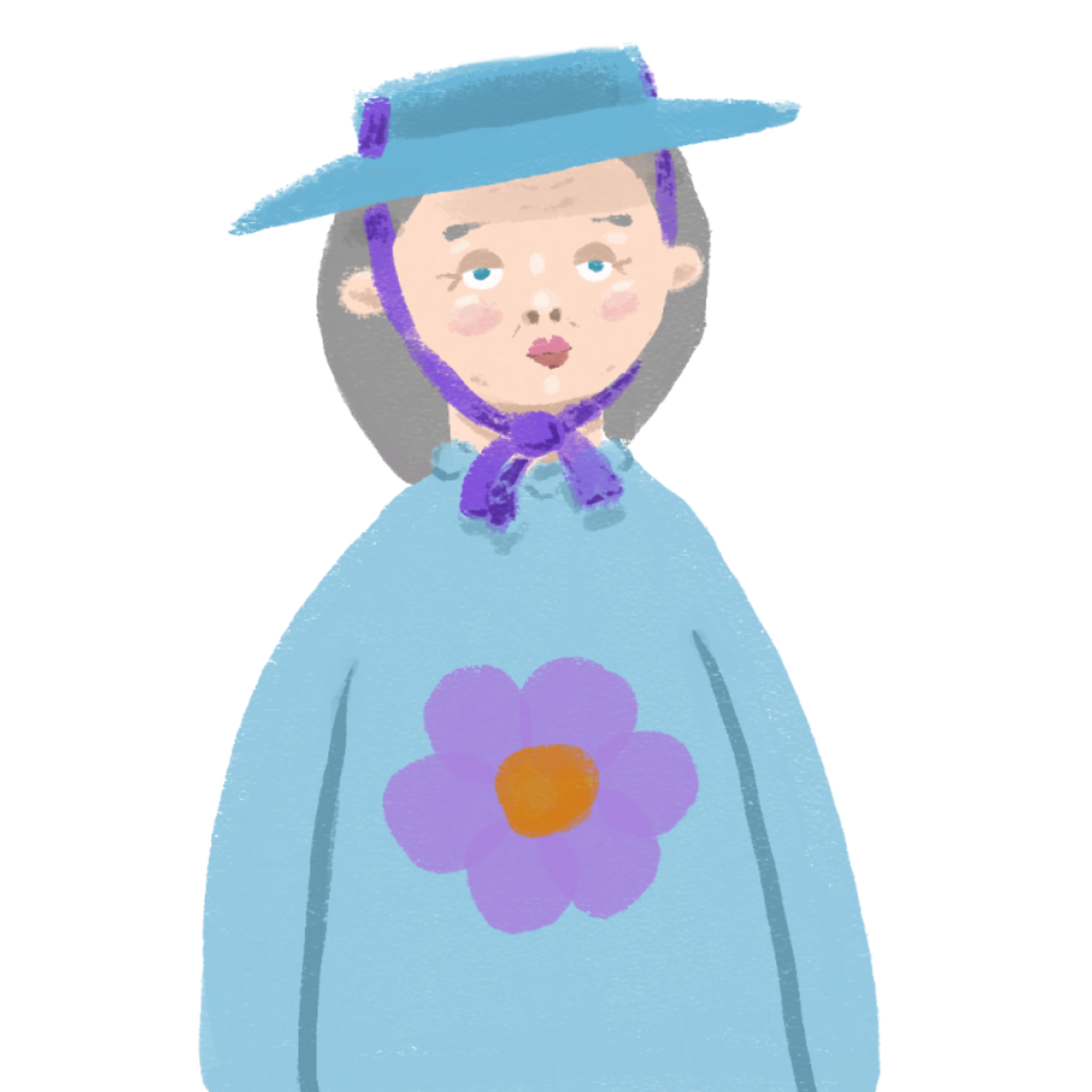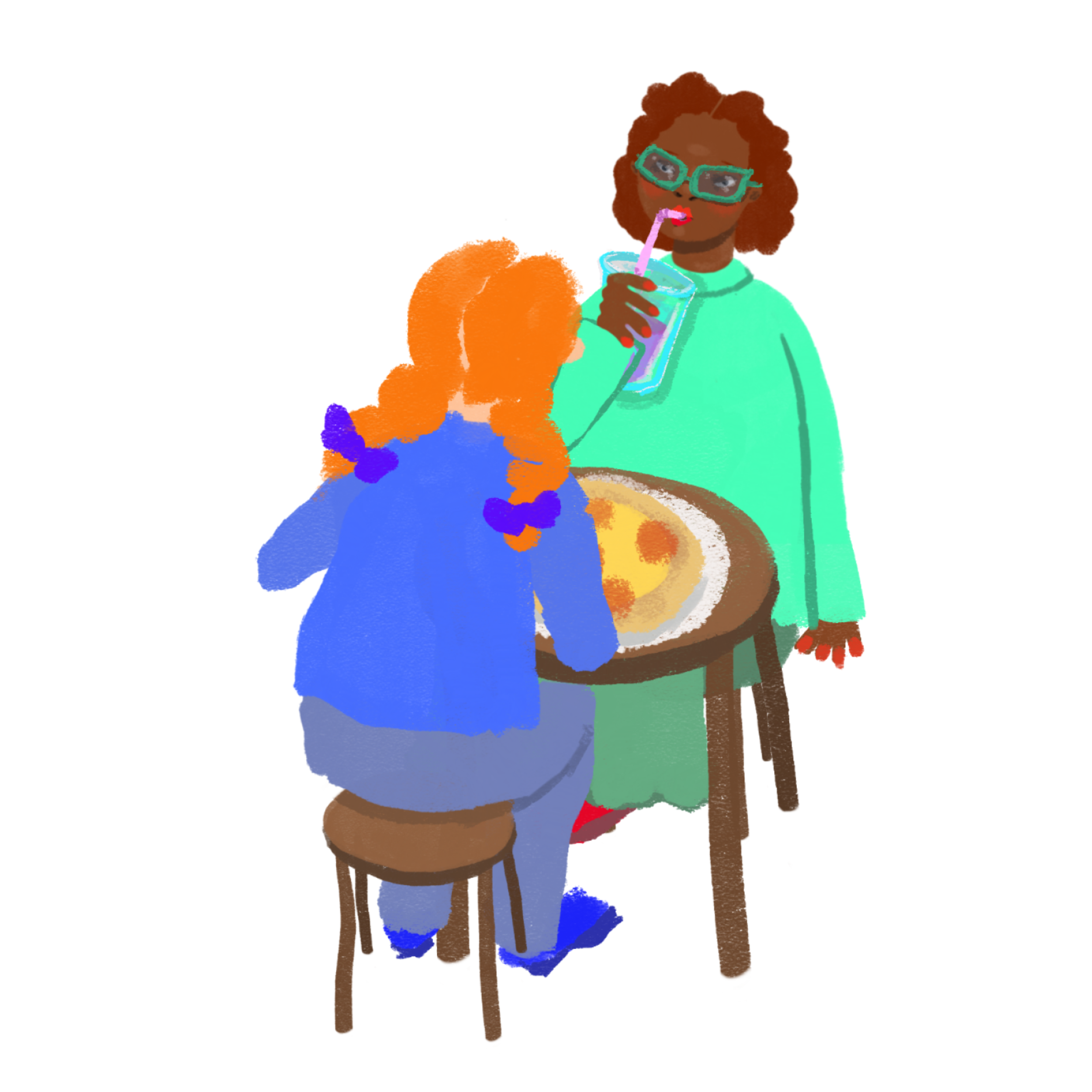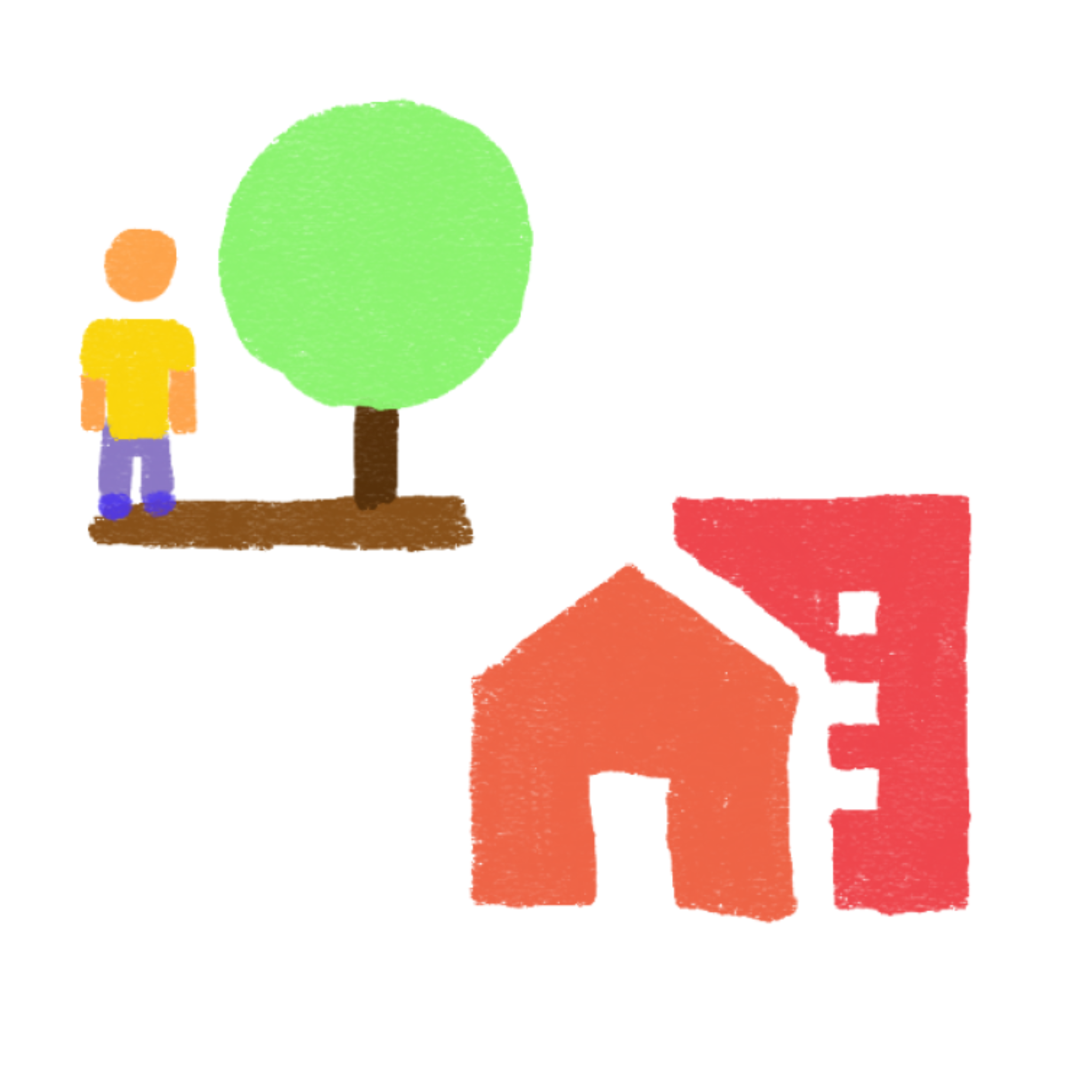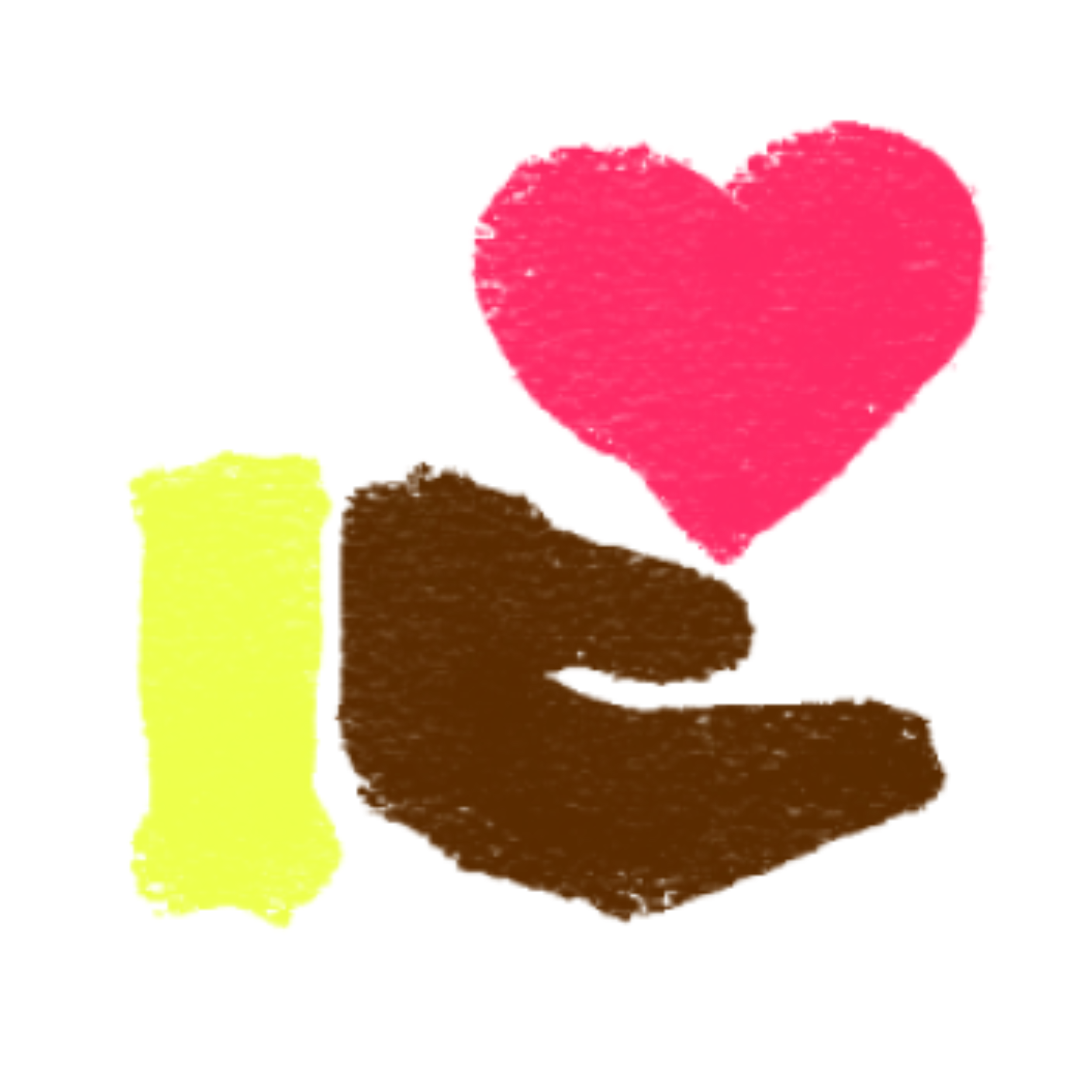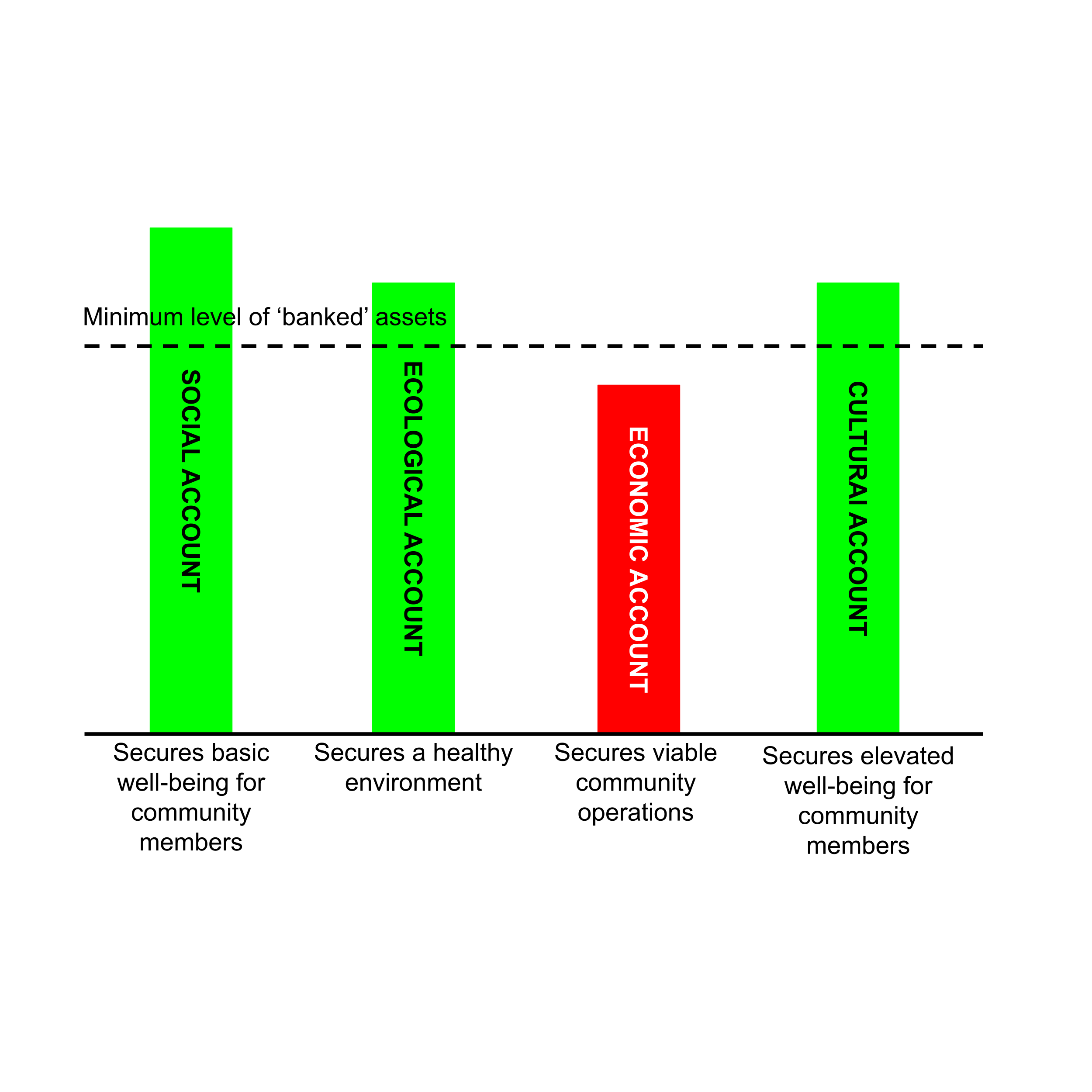Sustainabank
13 April, 2023
Images © Sofiia Franskevich
How could we live more affordably by doing something we enjoy, while helping our community and the environment?
SUSTAINABANK is a value exchange for urban communities, where members can 1) CONTRIBUTE by offering resources for the community, 2) RECEIVE by using resources from the community, 3) UNDERSTAND the condition of their neighborhood and 4) ACT to improve their neighborhood.
Dina: Traveller and physiotherapist, 34 years old, lives with her dog Tristan. #PARTICIPANT
Greta: Gardener and retired taxi driver, 76 years old, lives alone. #PARTICIPANT
Mahir: TikToker and carpenter student, 17 years old, lives with his mother and sister. #PARTICIPANT
Lou: Dancer and producer, 52 years old, lives with their partner Sidsel. #ACTIVIST
#PARTICIPANT: Benefits socially and/or economically from being active in the community and does it happily on their own flexible terms, has no interest for being an #ACTIVIST.
#ACTIVIST: Benefits socially and/or economically from being active in the community, has interest to actively organize and develop the community and commits to it by taking positions of trust.
GLADBORG: The home of Dina, Greta, Mahir, Lou, their families and their community – an example of a future ‘Neighbourhood of Generations’, empowered by SUSTAINABANK and inspired by Høje Gladsaxe and Axelborg, two existing non-profit housing areas in Denmark.
05:03 — As usual, Greta wakes up early for her morning tea and herbal infusion, both of which she has planted to and harvested from the allotment gardens. While enjoying her tea, Greta reads the community newspaper and is reminded that planting something in the allotment gardens adds to SUSTAINABANK’s ‘ecological account’, while harvesting reduces it. From the article’s infographics she learns that her herbs have a net neutral impact. Greta is excited about today since she has so much nice things to look forward to.
05:40 — Dina is also up early to take Tristan out for a walk to the pet yard. However, Dina is not very excited at the moment because it’s raining and still dark.
08:15 — After having some time for themselves in the morning, Dina and Greta meet in Greta’s apartment (not at the sports field as usual because of the rain) for their weekly exercise to treat Greta’s chronic joint ache, which Greta pays for by taking out Tristan for afternoon walks from Wednesdays to Fridays when Dina is away teaching physiotherapy at the University College. The transactions are managed with ‘community credits’ through SUSTAINABANK’s digital interface, which Dina uses through her phone and Greta through the touch display with fingerprint and password identification in the staircase. Both the physiotherapy sessions and the dog walks add to SUSTAINABANK’s ‘social account’. When Dina notices that Greta lives in a large family apartment (because her kids have left long time ago and she has stayed), she encourages Greta to enroll for the ‘apartment optimization program’, where Greta can earn a big chunk of ‘community credits’ for swapping to a smaller apartment so that families with kids, who have more need for the extra square meters, get access to the larger apartments. Greta gets interested because it would significantly help her economic situation as her need for various services are constantly increasing and she also knows that ‘community credits’ can be transferred to cash with certain conditions.
10:28 — Lou has a different rhythm, they usually sleep until past noon although not today because there’s a lot of work in preparing for tonight’s event. They grab a coffee and head to the combined community space and laundry, where they finalize their script for tonight’s event while waiting on the laundry. The laundromat works with ’community credits’ which can be released by swiping the phone or through a touch display in the community space and laundry, also here with fingerprint and password identification. The laundromat, just like any of the services in Gladborg, also work with conventional cash payments for those who do not have or want to use ’community credits’. Residents with higher income, such as working adults, often pay for their services with money as they don’t necessarily have time or energy to participate in the ’community credit’ system. Cash payments for community services add to SUSTAINABANK’s ’economic account’. After finishing with the laundry and the script, Lou goes to the hairdresser/saloon to finish their looks for tonight’s event. The hairdresser/saloon does not (at least yet) accept ’community credits’ and it’s ok since Lou also has conventional cash from their producer income to use for these kind of situations.
11:17 — After helping Greta with her exercise, Dina meets a friend for lunch at the restaurant and pays her lunch with ‘community credits’ by swiping her phone at the sales receiver device. The lunch adds to SUSTAINABANK’s ‘economic account’. The restaurant is a for-profit business but has chosen to be a part of the ‘community credits’ system because it helps them get affordable labor from community members who work there to earn ‘community credits’.
11:30 — Greta continues her day in the daycare, where she enjoys the company of children and staff while helping out by hosting a story corner for the children. This is a convenient way for Greta to earn ‘community credits’ while doing something she enjoys. The daycare is a municipal daycare which is piloting SUSTAINABANK’s ‘community credit’ system as a part of their resource adaptation program. The story corner adds to Gladborg’s ‘social account’.
12:30 — Mahir wakes up and checks his view count for his latest TikTok reel. It’s a bit more than last time but still not enough to generate income, looks like it’s gonna be another day of the usual grind for Mahir.
12:38 — Everyone gets notified (through phones, public displays and door-to-door and face-to-face communications mobilized by activists) about no ’community credits’ being valid until SUSTAINABANK’S overall balance has been returned. Currently there is a rarely occurring deficit in the ‘cultural account’, which needs to be restored to above minimum level, after which all ’community credits’ will be valid again. This is not unexpected and does not raise a lot of concern since most community members have been aware of the trend for the past weeks and they also know that there will be a community event organized at the local public school tonight, which will raise the ‘cultural account’ to well above minimum level.
13:00 — Mahir attends the afternoon shift kick-off meeting for the non-profit housing company’s maintenance team, held at the community space and lead by the site manager who briefs on today’s renovation tasks for the ‘apartment optimization program’ which, in addition to facilitating the swapping, combines small apartments into larger apartments after the small apartments become empty. For the period of waiting on the enlargement renovation, the small apartments are used for short term rentals. Mahir is doing his carpenter degree internship at the non-profit housing company’s maintenance team and for his work he earns ‘student watermarked community credits’, which will be transformed into student credits at his school. Mahir’s work for the ‘apartment optimization program’ adds to SUSTAINABANK’s ‘economic account’.
18:00 — Tonight’s community event, the ‘Gladborg Bi-Monthly’, is organized at the local public school and follows the usual agenda of 30 minutes of informal socializing to start, followed by a presentation and panel discussion about the state of the neighborhood. The main topic for today is how to solve the slight but seemingly chronic imbalance of ‘cultural surplus’ and ‘economic deficit’. The panel is concluded with agreeing on action points for the community to pursue, after which the event continues by more informal socializing adjoined by a small scale market with food, drinks, arts, crafts and live music, all provided by a mix of residents, non-profit organizations and local businesses. Lou is the star of the night, hosting the event and chairing the panel. Lou has put in a lot of hours when organizing the event and will get those hours compensated for in the form of ‘community credits’. Greta has been at the event from the start and starts to feel tired after a long day of activities. On her way home she greets Dina, who just arrived since she is not interested in the formal part and only comes for the market to scout for some affordable treats and handicrafts. Mahir came early straight after finishing his shift at the renovation site. He is eagerly waiting for the after hours when they will create a new set of TikTok reels with his friends. The event has a good reputation and it is visited also by people from outside of Gladborg. One example is a young family from the neighboring district, who decide to file an application for an apartment at the event. They would like to live in an affordable and vibrant place, just like Gladborg. There is some queue for the apartments but they get hope from talking to another family who just moved in after only waiting 4 months thanks to the ‘apartment optimization program’ which helps in unloading the queue for large apartments. Also an infill residential development will be finished in the area in 6 months, which gives even more hope to the potential newcomers.
20:38 — Lou is on fire since they nailed hosting the event and through doing it, earned enough ’community credits’ to cover two month’s rent. After the official program ends, they run straight to the dance floor together with Sidsel. They feel like they could dance forever and when the live band finishes after 3 encores, Lou convinces the remaining dancers to join for an afterparty. They grab some food and drinks from the still open market stalls and head to the community space to continue. The large display on the wall communicates about how Gladborg’s SUSTAINABANK is in overall balance again.
21:04 — Greta feels safe walking home from the event because the neighborhood’s public spaces are well lit with energy self-sufficient led lights and there is also a sense of presence from the surrounding community even if there is not a lot of people around. Maybe one reason are the public displays which make the community visible in a way that creates a feeling of safety. She ends her day the same way it started, by enjoying tea and a herbal infusion, both of which she has harvested from the allotment gardens. Greta is exhausted but happy after an exciting day and falls asleep immediately.
23:45 — After a wild night of roaming the neighborhood with his crew, Mahir is in his bed, editing his reels and is soon ready to publish them. He can’t decide if he should publish his usual neighborhood roaming reel or a new idea that he has been working on. The new idea is based on sharing user experiences about ‘community credit’. He is actually very tired but too excited to notice it and ends up falling asleep with his phone in his hand, it seems like the publishing has to wait for tomorrow.
00:51 — Dina is a night owl and even if she has had a long day, she doesn’t feel sleepy. She decides to take a long evening walk with Tristan during which she pops in for a glass of wine to a dog friendly restaurant in the neighboring district. Dina is surprised to notice that also this restaurant accepts ‘community credits’ and decides to pay with them as she has a bit of a surplus at the moment, thanks to a lot of elderly people in her neighborhood who she has helped with her physiotherapy services. Dina ends her day by laying on the couch with Tristan, eying on her phone and the bi-monthly community report shared digitally and at the event, but actually focusing on Netflix and some newly acquired sweets from the market. Tomorrow is her free day and she has already planned to jump straight back to bed after taking Tristan out for his morning walk – and maybe do a bit of planning for her next travels.
03:29 — Eventually, also the afterparty comes to its end after hours of dancing and socializing. The party crew respects their neighbors and manages to stay decently silent, which is also helped by the fact that the building was renovated (partly with ‘community credits’) a few years ago, including improvements to sound isolation. Lou and Sidsel are the last ones up and clean up the community space before heading home to sleep.
SUSTAINABANK is operated by various users in various spaces through various interfaces:
USERS
Highlighted with bold text in the introductory story and below:
PARTICIPANT: Benefits socially and/or economically from being active in the community and does it happily on their own flexible terms, typically a resident (e.g. Dina, Greta and Mahir), a local business or any other public or private actor.
ACTIVIST: Benefits socially and/or economically from being active in the community, has interest to actively organize and develop the community and commits to it by taking positions of trust, typically an active resident (e.g. Lou) or a local non-profit or community organization (e.g. non-profit housing organization).
SPACES
Highlighted with italic text in the introductory story and below:
RESTRICTED: Any space that is primarily used for other than community purposes, can be offered for community use on the possessors own flexible terms, typically an apartment, a commercial space or any other space possessed by public or private actor (e.g. restaurant, daycare, public school).
OPEN: Any space that is primarily used for community purposes e.g. community space, laundry, allotment gardens, pet yard, sports field or any other infrastructure owned by the public or a non-profit housing organization.
INTERFACES
Highlighted with underlined text in the introductory story and below:
PHYSICAL: Any physical point where users meet and interact e.g. restricted and open spaces, community events, community newspaper etc.
DIGITAL: Any digital point where users meet and interact e.g. online application that works in browser and as native application (can be prototyped with existing technology e.g. open online forum, WhatsApp, Facebook or other commonly used communication platform), usable on phones, pads, touch displays etc.
SUSTAINABANK is a value exchange for urban communities, where users can:
Contribute by offering resources such as spaces, skills and companionship for the benefit of the community.
Example: Offer your physiotherapist services to an elderly neighbor with aching joints.
Receive by using resources such as spaces, skills and companionship from the community.
Example: Have your neighbor take care of your dog and plants when you are away.
Understand the condition of their neighborhood.
Example: Learn that there is a deficit in the ‘cultural account’ of your neighborhood i.e. not enough actions that spiritually elevate the community and create a sense of purpose and belonging.
Act to improve their neighborhood.
Example: Find easy and enjoyable ways to increase the ‘cultural account’ of your neighborhood e.g. by getting offers on how to participate in organising a community event, in a way that suits and benefits you.
SUSTAINABANK is a sustainable bank based on ’community credit’, operated on the community level through ‘4 accounts of sustainability’ and on the individual level through individual accounts:
COMMUNITY CREDIT: To balance supply and demand, SUSTAINABANK uses ‘community credit’ – the community’s own currency. In the graphic below, ‘community credit surplus’ is represented by the green accounts and ‘community credit deficit’ is represented by the red account. In order for the community’s assets to be sustainably balanced, and for the credits to be valid, all community accounts should stay above the minimum level. If any account is under minimum level, it needs to be restored to above minimum level, in order for the credits to be valid.
COMMUNITY ACCOUNTS: Each account is monitored independently as well as in relation to the other accounts, in order to always have a minimum balance of assets in the ‘bank’, both as category specific value as well as an overall indicator for holistic sustainability. From the surplus of ‘banked’ assets, users can extract value that is relevant to them in exchange for any comparable amount of value that they have contributed or will contribute with. In the example above, the community needs to increase the economic account (by e.g. renting out spaces or other economic activities) in order to get the economic account above minimum level, after which ‘community credits’ become valid again. The restaurant accepts ‘community credit’ and this also helps since the restaurant’s transactions (e.g. Dina’s lunch) are economic activities and thus add to the ‘economic account’.
INDIVIDUAL ACCOUNTS: Through their ‘individual accounts’, users can earn and use ‘community credit’ through individual transactions. If a user inserts value (e.g. cooks lunch with a lonely elderly or helps with repairing the roof), the user will earn 'community credits' that will be added to their ‘individual account’ (and corresponding community account). If a user extracts value (e.g. harvests berries from the community garden or withdraws cash from the community fund), the user will use 'community credits' that will be withdrawn from their ‘individual account’ (and corresponding community account).
Each transaction between users affects both the users’ individual accounts and the corresponding community account. For example, when Dina treats Greta's aching joints, Greta will pay Dina with 'community credits' and as a result, Dina's individual credits will increase and Greta's decrease. In addition, the transaction will increase the community's ‘social account’, due to the transaction doing social good. Greta’s increasing need for services uses her credits but luckily she found out that she can swap her apartment to a smaller one, which will give her plenty of new credits.
SUSTAINABANK is an extension of the actual neighborhood, acting as a catalyst for a healthy community, sustainably fueled by the people and our finite resources:
Initiated and empowered by large scale housing organizations who, as ‘access givers’ to a critical mass of residents and spaces, can utilize their unique role and sustainable foundation to initiate, accelerate and scale holistically sustainable value creation.
Developed and implemented inclusively by a multidisciplinary team together with the residents and other stakeholders, using cost efficient development methods (e.g. lean and/or agile).
A community of collaborative agents acting for the benefit of themselves through acting for the benefit of a socially, ecologically, economically and culturally sustainable neighborhood and planet.
To balance supply and demand, community members can earn and use ‘community credit’ for individual transactions. ‘Community credit’ is monitored through both ‘individual accounts’ and the community’s ‘sustainability accounts’, in order to manage holistic sustainability.
Why would someone want to use SUSTAINABANK instead of conventional cash or services?
‘Community credits’ make it easy for anyone who has something to contribute with, to get real and concrete benefits (‘free’ or ‘discounted’ housing, food, services etc.) by doing something they enjoy and/or have the ability to – on their own terms. SUSTAINABANK makes a variety of everyday benefits more affordable and accessible to more people.
How does SUSTAINABANK differ from a ‘timebank’ or any other ‘community exchange platform’?
SUSTAINABANK is partly based on similar values and principles than a ‘timebank’ or most ‘community exchange platforms’. What makes it unique is the community level governance in the form of ‘4 accounts of sustainability’, to not only benefit the individual user but also the environment.
What is the purpose of the ‘4 accounts of sustainability’?
Our current system is detached from earth's finite resources and encourages unsustainable value creation, causing e.g. speculation, expensive financing/services, inequality and loneliness. SUSTAINABANK's '4 accounts of sustainability' offer a holistically sustainable system, putting the people and earth's finite resources to the center of value creation. SUSTAINABANK is a sustainable ‘bank’, enabling economic benefits, equal opportunities, affordable services and active communities to its users. The '4 accounts of sustainability' ensure that any social, ecological, economic or cultural value is extracted and compensated for in a balanced and holistically sustainable way.
How to get started?
Further development starts with developing the IDEA into a CONCEPT (weeks to months), followed by a PROTYTYPE (weeks to months), which is LAUNCHED in a real location with real users, to validate hypotheses and collect feedback (weeks to months). After this the prototype is ITERATED based on experiences from the launch (weeks to months), followed by a RELAUNCH of the improved version (weeks to months), after which the cycle of improving and scaling continues (months to years).
The concept is inspired by the 4 columns of sustainability principle and received an honorable mention in the international Neighbourhoods for Generations competition organized by Landsbyggefonden in Denmark.
Please reach out if you wish to collaborate or discuss more.


